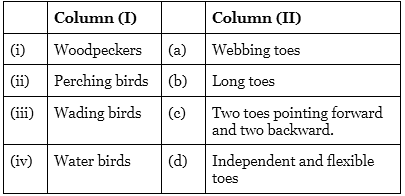Olympiad Test Level 1: Birds and Common Insects - Class 3 MCQ
20 Questions MCQ Test - Olympiad Test Level 1: Birds and Common Insects
Which of these are flightless birds-
Which of the following statements are the characteristics of Birds?
(i) They have feathers on their body.
(ii) Their body is divided into the head, thorax and abdomen.
(iii) They have thin, light and hollow bones.
(iv) Their forelimbs get modified into fur.
| 1 Crore+ students have signed up on EduRev. Have you? Download the App |
A Large or dense group of flying insects is known as.
Duck is an ______ animal and it uses its ______ to probe insects in the sand and mud.
Flightless bird: Penguin::Migratory bird:X
Unscramble the words to find out the smallest bird in the world
Insects breathe with a network of tiny tubes called
Among the following Insects which have a sucking type feeding habit?
Which among the following can fly?
What type of a beak is found in Ducks?
Choose the correct option- are the option true or false
(i) Birds have hollow bones which help to fly.
(ii) Kiwi is a flightless bird.
(iii) Eagle is a herbivorous bird.
(iv) Ducks have pointed beaks.
The most diverse group of animals on earth-
There are_____pair of legs in an Insect.
Which among the following succumb to death after mating
Kavi made a group of some animals shown below. But he has made a mistake. Ravi should remove which of the following from the group to correct his mistake?


















